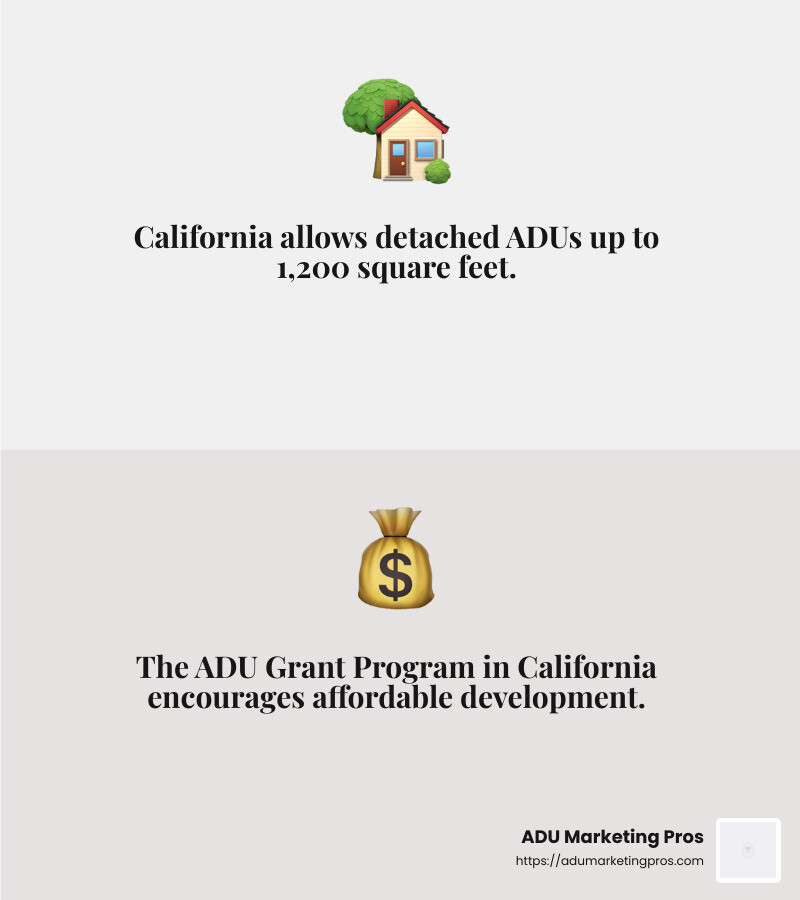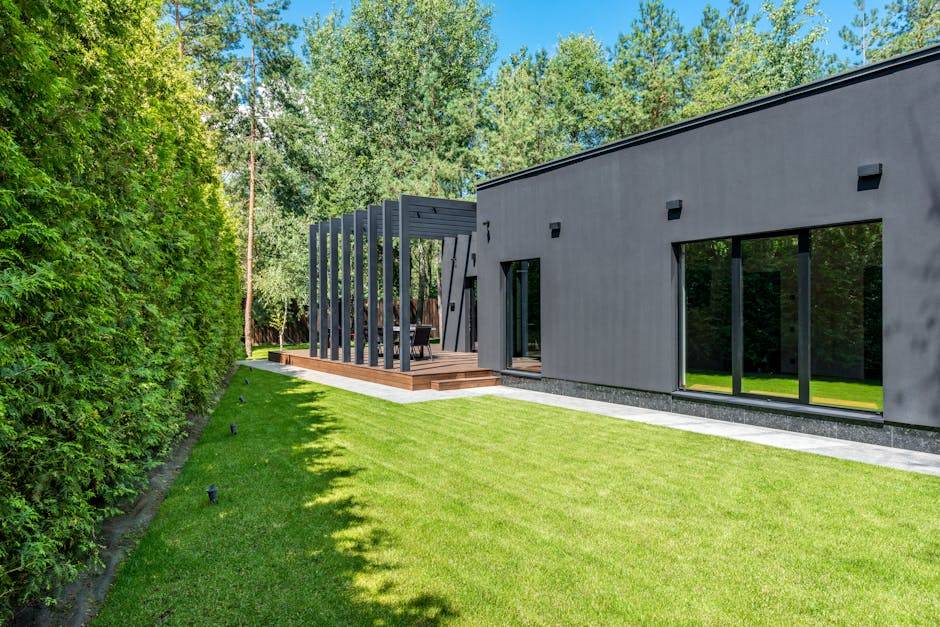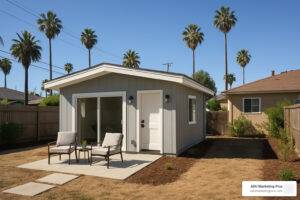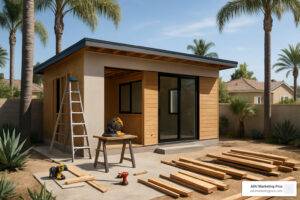What states allow adu? If this is your inquiry, here’s your quick answer. The states that are most accommodating for accessory dwelling units (ADUs) include:
- California
- Oregon
- Maine
- Connecticut
- Washington
- New York
In recent years, Accessory Dwelling Units (ADUs) have emerged as a transformative solution to tackle the housing shortage in the United States. These compact, self-contained homes share a lot with a larger primary residence and serve diverse purposes—from generating rental income to providing a residence for family members.
The rise of ADUs is tightly intertwined with changes in zoning laws. These laws, traditionally restrictive, have been evolving to support the growth of ADUs, especially in states that prioritize addressing housing shortages. By enabling more flexible land use, these states provide a crucial pathway to increase housing density without altering neighborhood character.
The states mentioned above have acceptd ADUs by implementing more permissive regulations, paving the way for innovative housing solutions. Whether you’re a homeowner looking to add an ADU to your property or a professional in the field, understanding how these regions support ADU development can set you on a path to success.

What States Allow ADUs?
California is leading the charge in the ADU movement. The state has made significant strides since 2017, when it passed laws to make ADU construction easier and faster. California allows detached ADUs to be as large as 1,200 square feet, and attached ADUs can be up to 50% of the main home’s size. The state also provides incentives like the ADU Grant Program to encourage affordable development.

Oregon has also been proactive in promoting ADUs to address housing affordability. The state requires cities with at least 2,500 residents and counties with at least 15,000 to allow both attached and detached ADUs. Oregon’s laws aim to increase housing options and affordability, especially within urban growth boundaries.
Maine passed its first ADU law in 2022, making it easier for homeowners to add these units. The law requires ADUs to be at least 190 square feet and prohibits cities from imposing additional parking requirements beyond those for single-family homes. Once the law is fully implemented in 2024, Maine is expected to become one of the most ADU-friendly states.
Connecticut joined the ADU-friendly states in 2021 with HB 6107, which allows ADUs wherever single-family homes are permitted. However, local municipalities had the option to opt out, and 115 of the 169 did so. Despite this, many towns have adopted their own regulations, with 67% allowing ADUs in some form.
Washington state has been a pioneer in ADU legislation. The recent HB 1337 lifts parking mandates, ends owner-occupancy requirements, and limits impact fees to 50% of those for the principal unit. It also legalizes two ADUs per lot, making Washington’s framework one of the strongest in the country.
New York offers incentives like the Plus One ADU Program to encourage the construction of ADUs. This initiative combines capital loans with low or no-interest rates and grants, providing significant financial support for homeowners who wish to add ADUs to their properties.
These states have accepted ADUs as a key component in addressing the housing crisis, each tailoring its regulations to fit local needs and priorities. Whether you’re a homeowner or a professional in the ADU space, these regions provide valuable opportunities to expand housing options.
Benefits of ADUs
Accessory Dwelling Units (ADUs) offer several compelling benefits, making them a popular choice for homeowners and communities alike. Let’s explore some of the key advantages, including multigenerational living, increased density, and economic advantages.
Multigenerational Living
ADUs provide an excellent solution for families looking to accommodate multiple generations under one roof while maintaining privacy. They allow elderly parents to live close by without sacrificing their independence or space. This setup can also be beneficial for adult children returning home after college or during life transitions.
“ADUs can be highly beneficial for families who want to maintain proximity without sacrificing independence,” according to a study by Investopedia.
Increased Density
By adding ADUs to existing properties, communities can increase housing density without the need for sprawling new developments. This approach helps to make better use of available land, particularly in urban areas where space is limited. Increased density can lead to more vibrant neighborhoods with diverse housing options.
- Urban Growth: ADUs contribute to urban growth by offering more living spaces within existing neighborhoods.
- Sustainability: Higher density means more efficient use of resources and infrastructure, supporting sustainability goals.
Economic Advantages
ADUs present several economic benefits for homeowners and communities. They can provide a reliable source of rental income, helping homeowners offset mortgage costs or save for future expenses. Moreover, ADUs can increase property values by adding more functional living space to a home.
- Rental Income: ADUs can generate extra income, making them an attractive investment.
- Property Value: Adding an ADU often increases the overall value of a property, appealing to potential buyers seeking additional space.
These benefits showcase why ADUs are increasingly seen as a versatile and effective solution to housing challenges. They offer homeowners a way to adapt to changing family needs, contribute to community growth, and provide economic opportunities.
Next, we’ll dive into the key regulations in ADU-friendly states, which play a crucial role in how these units are developed and used.
Key Regulations in ADU-Friendly States
When it comes to building Accessory Dwelling Units (ADUs), understanding the regulations is crucial. Let’s explore some of the key rules that govern ADUs in states that are friendly toward them, focusing on owner-occupancy, parking requirements, and discretionary reviews.
Owner-Occupancy
Owner-occupancy requirements can be a significant barrier for homeowners interested in building an ADU. These rules often mandate that the property owner must live in either the main house or the ADU. However, not all states impose this restriction.
- Washington: Homeowners can build ADUs without being required to live on the premises. This flexibility makes it easier for property owners to rent out both the main house and the ADU.
- Oregon: Some cities do not require the property owner to live on the property, offering more freedom for homeowners.
Parking Requirements
Parking requirements can make or break the feasibility of adding an ADU. Some states have relaxed these rules to encourage ADU construction.
- Maine: Cities in Maine cannot force homeowners to add extra parking spots for ADUs beyond what is required for the main house. This makes it easier for homeowners to build ADUs without worrying about additional parking space.
- Connecticut: The state has removed parking space requirements for ADUs, simplifying the process for property owners.

Discretionary Reviews
Discretionary reviews can be daunting, requiring time-consuming and costly processes. Fortunately, some states have streamlined these procedures.
- Connecticut: ADUs are permitted by right, meaning city officials don’t need to give special approval. This eliminates the need for lengthy reviews and makes it easier for homeowners to proceed with their plans.
- Oregon: The state has relaxed regulations, reducing the need for discretionary reviews in some areas.
These key regulations in ADU-friendly states demonstrate a commitment to making ADUs more accessible and practical for homeowners. By reducing barriers like owner-occupancy requirements, parking mandates, and discretionary reviews, these states are paving the way for more housing options and affordability.
Next, we’ll explore how you can add an ADU to your property, including types, budget planning, and the necessary permits.
How to Add an ADU to Your Property
Building an Accessory Dwelling Unit (ADU) on your property can be a fantastic way to add space and value. But where do you start? Let’s break it down into simple steps: ADU types, budget planning, and permits and approval.
ADU Types
First, decide what type of ADU suits your needs. Here are the main options:
- Detached ADU: A separate structure in your backyard. Think of it as a small cottage or a converted garage.
- Attached ADU: An extension to your existing home. This could be a basement apartment or an addition to the side of your house.
- Above-Garage ADU: Built on top of an existing or new garage. This maximizes space without taking up more of your yard.
- Garage Conversion: Changing an existing garage into a livable space.
Each type has its pros and cons, so consider what fits best with your property and goals.
Budget Planning
Once you know the type of ADU you want, it’s time to plan your budget. Here’s how:
-
Get Estimates: Talk to several local contractors who have experience with ADUs. This will give you an idea of costs for construction, materials, and labor.
-
Consider Financing Options: If you need financing, consider options like a RenoFi loan. This allows you to borrow against the after-renovation value of your home, giving you more borrowing power than traditional home equity loans.
-
Factor in Additional Costs: Don’t forget to include costs for permits, utility connections, and landscaping. These can add up quickly and impact your overall budget.
Permits and Approval
Before construction begins, securing the right permits is crucial. Here’s a quick guide:
-
Research Local Regulations: Check your city or county’s zoning laws to ensure ADUs are permitted. Each area has different rules, so know what’s allowed.
-
Get the Necessary Permits: You’ll need permits for construction, electrical, plumbing, and more. Working with a professional who understands local regulations can simplify this process.
-
Ensure Compliance: Make sure your ADU plans comply with local building codes and zoning requirements. This will help avoid delays and potential fines.
By understanding the types of ADUs, planning your budget carefully, and navigating the permit process, you’ll be well on your way to adding an ADU to your property.
In the next section, we’ll tackle some frequently asked questions about ADUs, including challenges, rental possibilities, and their impact on property value.
Frequently Asked Questions about ADUs
What are the challenges of building an ADU?
Building an ADU can be a fantastic investment, but it’s not without its problems. A challenge is permits. Navigating the permit process can be daunting, as it involves understanding local zoning laws and ensuring compliance with building codes. Each city might have different requirements, so it’s crucial to do your homework.
Another challenge is property size. Not every property is suitable for an ADU. You’ll need enough space to meet setback requirements and accommodate the structure without overcrowding your lot. If your yard is small, you might need to get creative with your design or consider options like garage conversions.
Can I rent out my ADU?
Yes, you can rent out your ADU, but there are a few things to keep in mind. Rental income from an ADU can be a great way to offset construction costs and provide extra income. However, regulations vary widely depending on your location. Some areas have strict rules about short-term rentals, like those listed on Airbnb, while others might have owner-occupancy requirements.
It’s important to consult with local authorities or a real estate professional to understand what’s allowed in your area. Additionally, consider the demand for rental units in your neighborhood to ensure it’s a worthwhile investment.
How do ADUs impact property value?
Adding an ADU can potentially increase your property’s value. This is especially true in areas with high market demand for rental units or additional living spaces. An ADU can make your property more attractive to buyers looking for rental income opportunities or multigenerational living options.
However, the exact impact on property value will depend on several factors, including the quality of the ADU, its integration with the main property, and the local real estate market. It’s a good idea to consult with a real estate agent to assess how an ADU might affect your home’s value in your specific area.
In our next section, we’ll dig deeper into the benefits of ADUs, including how they support multigenerational living and contribute to economic advantages.
Conclusion
Accessory Dwelling Units (ADUs) are becoming an increasingly popular solution to housing shortages across the U.S. They offer flexible living arrangements and can provide additional income, making them a valuable addition to many properties. However, navigating the complexities of building and marketing ADUs requires expertise and strategic planning.
This is where ADU Marketing Pros comes in. We specialize in crafting digital marketing solutions custom specifically for ADU construction and architecture firms. Our goal is to help your business attract high-quality leads and stand out in a competitive market.
Our services include targeted SEO, PPC, and social media strategies designed to lift your brand and drive measurable growth. By focusing on your expertise rather than price, we ensure that your firm becomes the obvious choice for clients ready to invest in premium ADU projects.
Our team is dedicated to staying ahead of industry trends and evolving regulations, providing you with the insights needed to adapt and thrive. With offices in major California cities like Los Angeles, San Diego, and San Jose, we’re well-positioned to support ADU businesses across the state.
If you’re ready to take your ADU business to the next level, explore our ADU Marketing Solutions and let us help you achieve your goals. Together, we can build a strong, recognizable brand and drive sustainable growth in the ADU market.




